What is NASA working on?
A running list of the space agency's most exciting developments
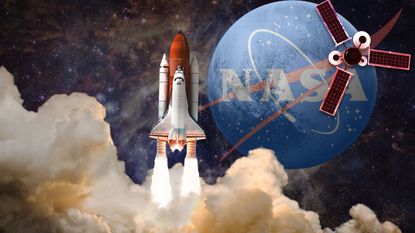

NASA has a lot in the works, from collecting asteroid samples to putting humans on the moon and Mars. Below, we take a look at some of the excitement surrounding the space agency.
Artemis mission
Perhaps the mission with the most publicity, NASA's Artemis mission aims to put people back on the moon and "establish the first long-term presence."
The mission is ongoing and takes place in phases. Artemis I took place in November 2022 and tested the safety of NASA's Space Launch System rocket using mannequins in preparation for phase II. Artemis II is expected to occur in September 2025, Reuters said. The phase will last approximately 10 days when "four astronauts will fly around the moon to test NASA's foundational human deep space exploration capabilities … for the first time with crew." The next phase, Artemis III, "will mark humanity's first return to the lunar surface in more than 50 years," and "make history by sending the first humans to explore the region near the lunar South Pole." That is expected to take place in 2026. In addition to exploring the moon, NASA hopes to mine the area by 2032. The agency is looking to develop resources on the moon including water, oxygen and eventually minerals like iron.
Subscribe to The Week
Escape your echo chamber. Get the facts behind the news, plus analysis from multiple perspectives.

Sign up for The Week's Free Newsletters
From our morning news briefing to a weekly Good News Newsletter, get the best of The Week delivered directly to your inbox.
From our morning news briefing to a weekly Good News Newsletter, get the best of The Week delivered directly to your inbox.
NASA has also been funding private companies to create lunar landers to be tested prior to humans making the attempt. The Peregrine launcher, created by the company Astrobotic Technology, was launched in January 2024, but did not make it to the moon because of a critical propellant loss. In February, the Odysseus launcher, created by the company Intuitive Machines, successfully landed on the moon "marking the first commercial spacecraft to soft-land on the moon, and the first U.S.-made vehicle to touch down on the lunar surface since the Apollo program ended more than five decades ago," said CNN.
On to Mars
NASA hopes to eventually use the outcomes of the Artemis mission to push humanity to Mars. The space agency is starting with a simulated mission known as the Crew Health and Performance Exploration Analog (CHAPEA), in which four people will live in a simulated Mars-like environment for a year to test the extent to which research can be done, as well as whether people could live and work there. There are four main complications that make traveling to Mars high risk: radiation, an eyeball swelling condition that occurs when people spend too much time in low-gravity situations, crew cooperation, and food and nutrition, CNN said. The first simulation began in June 2023, and the last one will take place in 2026.
NASA's Psyche mission, launched in October 2023 with the goal of reaching a distant asteroid, hit its first milestone by "successfully carrying out the most distant demonstration of laser communications," CNN said. This is through the Deep Space Optical Communications technology demonstration (DSOC) aboard the Psyche spacecraft. The DSOC was able to achieve "first light," successfully sending and receiving data. This is an initial step in deeper space study and can aid in further exploration and reaching Mars.
Tracking climate changes
NASA's work isn't limited to space — the agency does valuable work for Earth, as well, especially in regard to tracking climate change. NASA has an Earth-observing satellite with the ability to track carbon dioxide emissions and removal by country. Tracking carbon emissions was not the initial goal of the satellite, but it provided a unique opportunity. "NASA is focused on delivering Earth science data that addresses real-world climate challenges," said Karen St. Germain, the director of NASA's Earth Science Division. Another of NASA's satellites detected early signs of El Niño, the natural phenomenon sending global temperatures skyrocketing, as well as identified that coastlines are rapidly sinking.
NASA is also now tracking space weather, namely solar storms. The agency launched its new GOES-U satellite in June. "In addition to its critical role in terrestrial weather prediction, the GOES constellation of satellites helps forecasters predict space weather near Earth that can interfere with satellite electronics, GPS, and radio communications," NASA said. "This fleet of advanced satellites is strengthening resilience to our changing climate, and protecting humanity from weather hazards on Earth, and in space."
Sampling asteroids
Through the agency's OSIRIS-REx program, scientists have retrieved a sample from the asteroid Bennu. Researchers have only tested the black rocks and dust on the outside of the collection device, but there have already been interesting findings. "We have verified that Bennu is dominated by water-bearing clay minerals," Dante Lauretta, the principal investigator for NASA's OSIRIS-REx mission, said to NPR. "We're just beginning here, but we picked the right asteroid, and not only that, we brought back the right sample," Daniel Glavin, OSIRIS-REx sample analyst and senior scientist at NASA's Goddard Space Flight Center, said to CNN. "This stuff is an astrobiologist's dream."
NASA launched its Psyche mission in October 2023. The mission's goal is to travel to a "unique metal-rich asteroid with the same name, orbiting the Sun between Mars and Jupiter," the NASA website said. The asteroid is metal-heavy and may be a "partial core of a planetesimal, a building block of an early planet." The mission is expected to begin exploring the asteroid in 2029.
Finding minerals
NASA has started using modified U-2 spy planes to hunt for "strategic minerals" in the desert, Space.com said. The planes are being used to "locate stores of minerals hidden in the American desert," that are "vital for electronics manufacturing, the US economy and, by extension, national security."
The project is called the Geological Earth Mapping Experiment (GEMx) and is in collaboration with the United States Geological Survey. "Undiscovered deposits of at least some of these critical and strategic minerals almost certainly exist in the United States, but modern geophysical data is needed to increase our knowledge of these resources," Dean Riley, a collaborator on the project, said in a statement.
Dragonfly mission
NASA officially approved the $3.35 billion Dragonfly mission, a "revolutionary project to explore Saturn's largest moon with a quadcopter drone," Ars Technica said. The rotorcraft is set to arrive at Saturn'’s moon Titan in 2034. "Dragonfly is a spectacular science mission with broad community interest, and we are excited to take the next steps on this mission," Nicky Fox, the associate administrator of NASA's Science Mission Directorate Headquarters, said in a NASA statement. "Exploring Titan will push the boundaries of what we can do with rotorcraft outside of Earth."
The goal of the mission is to "fly to dozens of promising locations on the moon, looking for prebiotic chemical processes common on both Titan and the early Earth before life developed," the statement said. The rotorcraft will explore Titan for three years. The Dragonfly mission is also the first where NASA is flying a vehicle on another planetary body for science.
Superalloy license
NASA licensed its new superalloy GRX-810 to be used by four American companies that will market and produce the alloy to "airplane and rocket equipment manufacturers as well as the entire supply chain," said NASA. The superalloy is a "3D-printable high-temperature material that will lead to stronger, more durable airplane and spacecraft parts that can withstand more punishment before reaching their breaking point."
GRX-810 can survive through higher temperatures up to 2,000 degrees Fahrenheit (1,093 degrees Celsius), higher stress and can last 2,500 times longer compared to other nickel-based alloys. "Adoption of this alloy will lead to more sustainable aviation and space exploration," said Dale Hopkins, the deputy project manager of NASA's Transformational Tools and Technologies project, in the statement. "This is because jet engine and rocket components made from GRX-810 will lower operating costs by lasting longer and improving overall fuel efficiency."
Scientific Balloon Program
NASA runs an annual fall balloon campaign where "eight balloon flights carrying scientific experiments and technology demonstrations are scheduled to launch from mid-August through mid-October" from New Mexico, said NASA. "The flights will support 16 missions, including investigations in the fields of astrophysics, heliophysics, and atmospheric research." The program aims to "provide high altitude scientific balloon platforms for scientific and technological investigations," said the program website.
The Scientific Balloon Program has existed for over 30 years and has been instrumental in scientific discoveries and growing knowledge about Earth and space. "Not only are we launching a large number of missions, but these flights set the foundation for follow-on missions from our long-duration launch facilities in Antarctica, New Zealand and Sweden," said Andrew Hamilton, the acting chief of NASA's Balloon Program Office.
Create an account with the same email registered to your subscription to unlock access.
Sign up for Today's Best Articles in your inbox
A free daily email with the biggest news stories of the day – and the best features from TheWeek.com
Devika Rao has worked as a staff writer at The Week since 2022, covering science, the environment, climate and business. She previously worked as a policy associate for a nonprofit organization advocating for environmental action from a business perspective.
-
 What are the lessons from Ukraine's Russia incursion?
What are the lessons from Ukraine's Russia incursion?Talking Points And what do they mean for Putin's red lines?
By Joel Mathis, The Week US Published
-
 Harris claims steadfast values in CNN interview
Harris claims steadfast values in CNN interviewSpeed Read This was Harris' first major television interview since she became the Democratic presidential nominee
By Peter Weber, The Week US Published
-
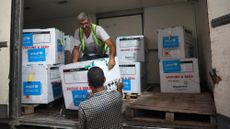 Israel, UN agree to Gaza pauses for polio vaccinations
Israel, UN agree to Gaza pauses for polio vaccinationsSpeed Read Gaza's first case of polio in 25 years was confirmed last week in a 10-month-old boy who is now partially paralyzed
By Rafi Schwartz, The Week US Published
-
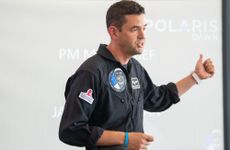 Is billionaire's 'risky' space flight about research or tourism?
Is billionaire's 'risky' space flight about research or tourism?In the Spotlight Jared Isaacman takes an all-private crew to space
By Joel Mathis, The Week US Published
-
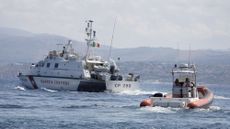 Is dangerous weather in the Mediterranean Sea the new normal?
Is dangerous weather in the Mediterranean Sea the new normal?Today's Big Question A waterspout, or sea tornado, recently sank a superyacht off the coast of Sicily
By Justin Klawans, The Week US Published
-
 The moon may be the ideal place to preserve Earth's biodiversity
The moon may be the ideal place to preserve Earth's biodiversityunder the radar A cache in a crater
By Devika Rao, The Week US Published
-
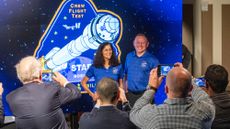 Nasa's astronauts: stranded in space
Nasa's astronauts: stranded in spaceIn the Spotlight Sunita Williams and Butch Wilmore's eight-day trip to the ISS has now stretched into weeks amid concerns over their Starliner spacecraft
By The Week UK Published
-
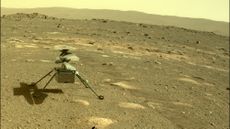 Why water on Mars is so significant
Why water on Mars is so significantThe Explainer Enough water has been found to cover the surface of the Red Planet – but there's a catch
By Chas Newkey-Burden, The Week UK Published
-
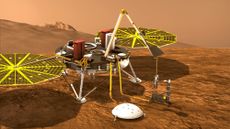 Liquid water detected on Mars raises hopes of life
Liquid water detected on Mars raises hopes of lifeSpeed Read A new study suggests huge amounts of water could be trapped beneath the surface of Mars
By Peter Weber, The Week US Published
-
 Celestial events to watch in 2024
Celestial events to watch in 2024The Explainer Meteor showers, eclipses and more are coming to the skies
By Devika Rao, The Week US Published
-
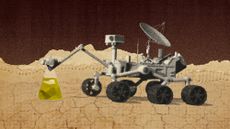 Nasa's 'strangest find': pure sulphur on Mars
Nasa's 'strangest find': pure sulphur on MarsUnder the Radar Curiosity rover discovers elemental sulphur rocks, adding to 'growing evidence' of life-sustaining elements on Red Planet
By Harriet Marsden, The Week UK Published